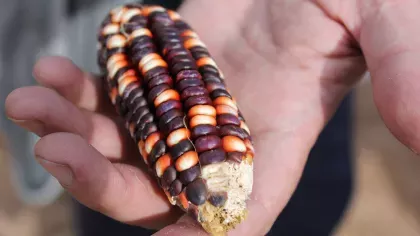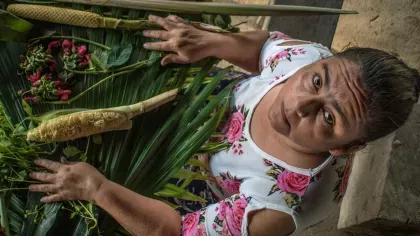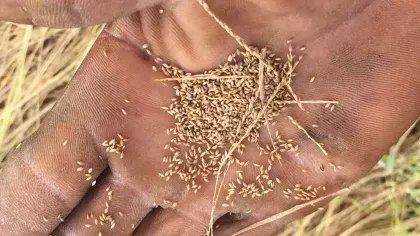10 June 2022
5 ways Kew is protecting food from extinction
Discover five foods that Kew scientists are protecting.

Biodiversity is the incredible variety of all life on earth, and our diets and health depend on it.
It provides us with the food we eat, and the organisms needed to maintain our food system through ecosystem services such as pollination, clean air, water purification and pest control.
But with the pressures of the climate change and biodiversity crises compounded with a rising global population and an over reliance on just a handful of crops, our food system is vulnerable, and species are disappearing fast.
At Kew, many of our 350+ scientists are working with partners around the globe to protect food crops from disappearing and identifying edible species that can increase the resilience and diversity of what we eat to increase food security.
Here, we highlight some of their food-related research.
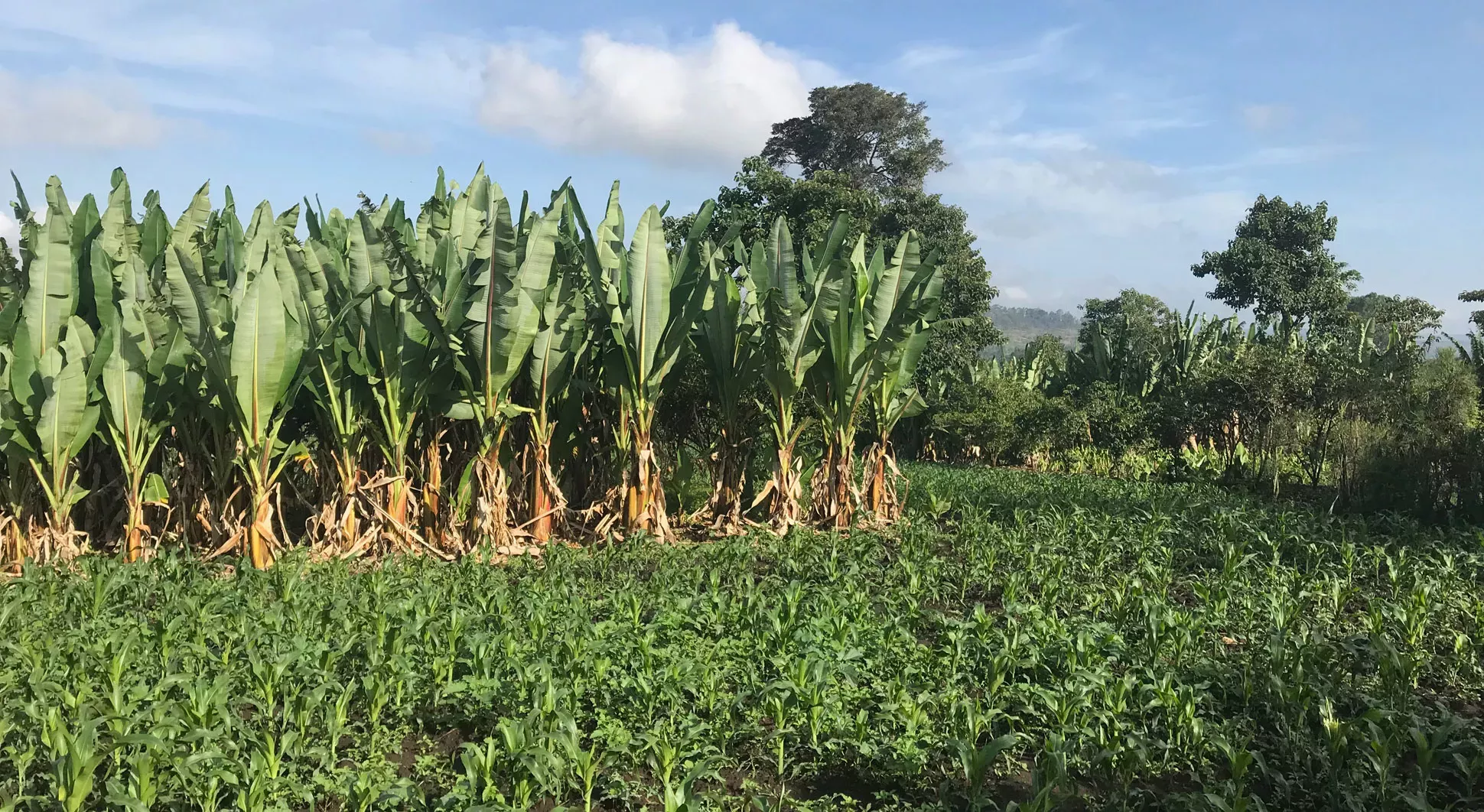
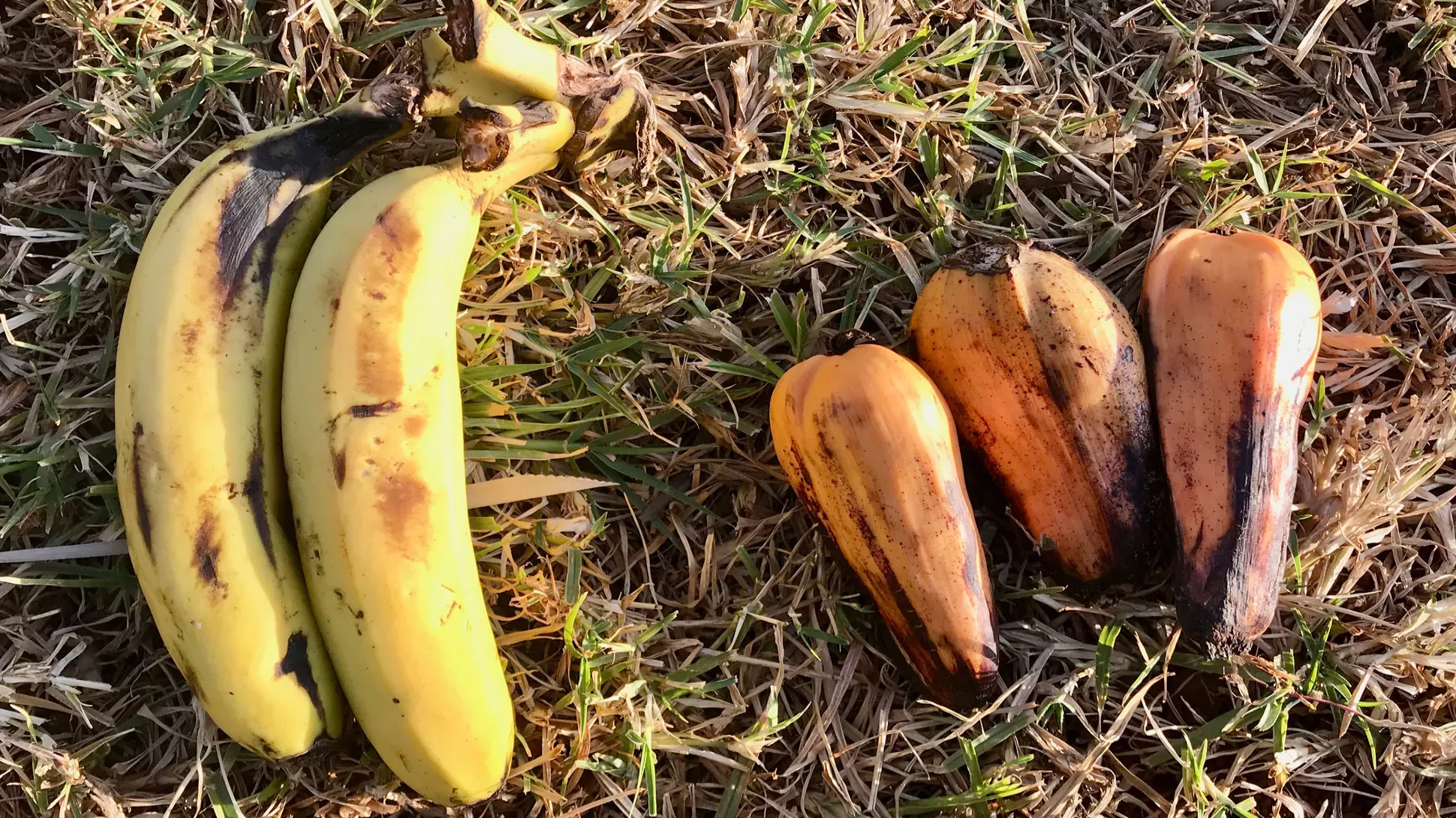
1. The ‘false banana’
Enset (Ensete ventricosum) is a close relative of the banana that grows in Ethiopia. The domesticated form of enset is eaten by 20 million people, and it has the potential to feed millions more.
Enset is a remarkable crop and, in Ethiopia, has earned the name ‘the tree against hunger’. It can be planted and harvested at any time of year and produces several hundred kilograms of starchy vegetable-like tissue that is turned into various foods such as porridge and kocho, a traditional flatbread.
Although wild enset is bitter and unpalatable, it can tolerate slightly different growing conditions, and so contains diversity that could be useful in the future for plant breeding.
With partners in Ethiopia, Kew is identifying crops, like enset, that could help feed people in the face of climate change.
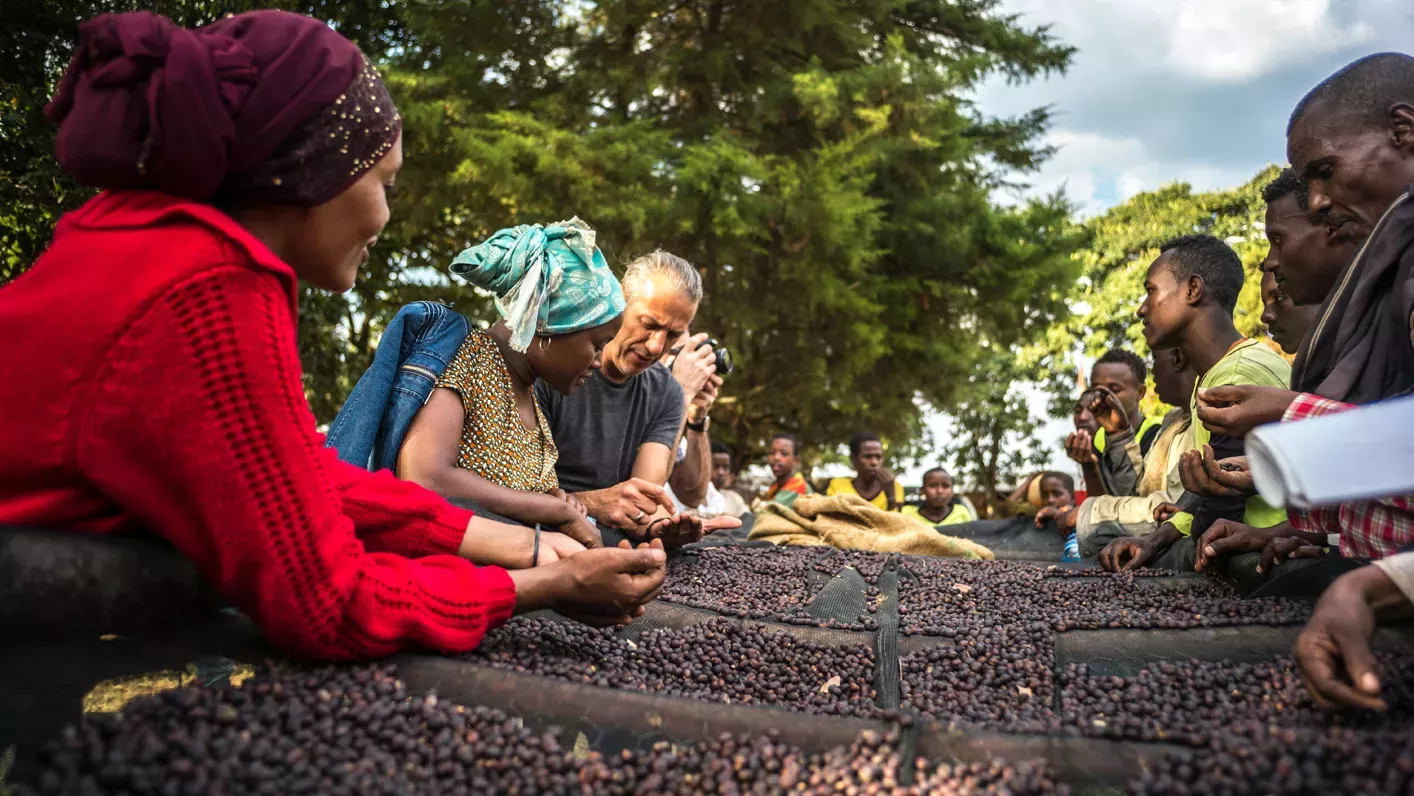
2. Coffee
Coffee is the most popular drink consumed around the world. The coffee sector is also a multi-billion dollar industry and one which over 100 million people depend on for their livelihoods.
Despite there being over 124 species of coffee, we currently depend on only two, Arabica (Coffea arabica) and Robusta (C. canephora), to produce our daily cup.
As global temperatures rise, the number of suitable regions for cultivating these plants is in decline so scientists at Kew are committed to finding and safeguarding coffee species that can tolerate warmer growth conditions and that taste great.
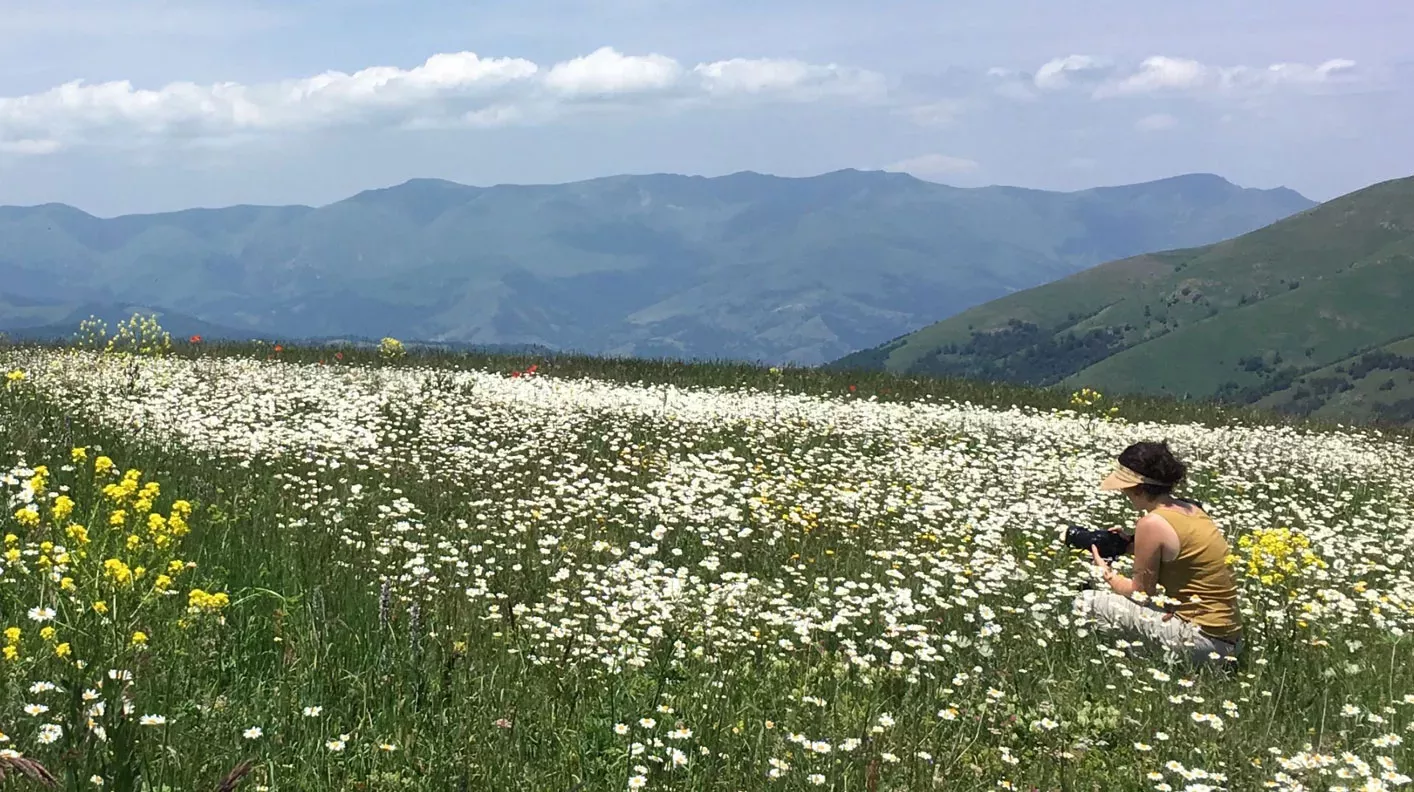
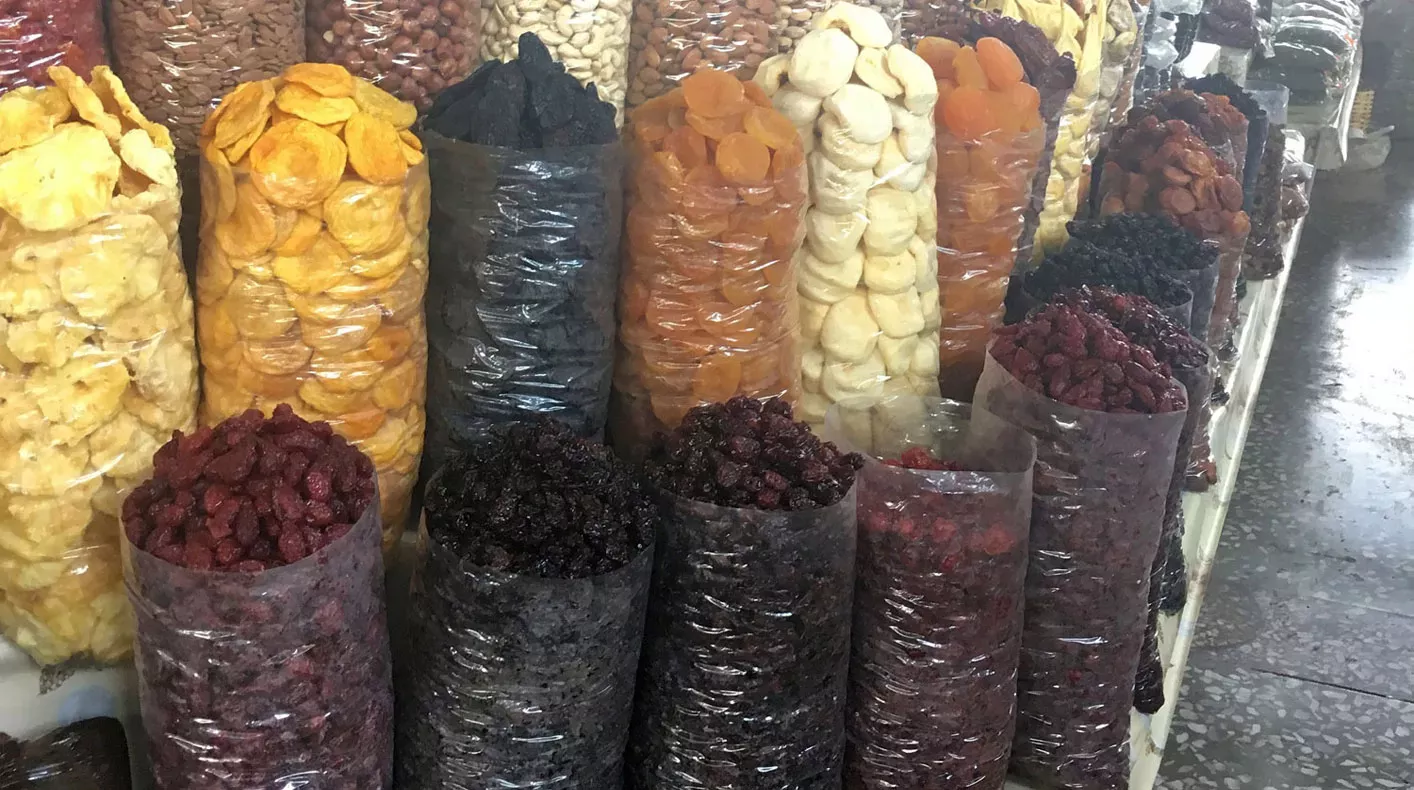
3. Fruits and nuts
The Caucasus region, between the Black Sea and Caspian Sea, boasts a tapestry of habitats and botanical charm. The area is also well known for its huge diversity of food crops, including fruits and nuts.
Within local markets and dotted along roadsides, are incredible displays of dried fruits and nuts. Sadly, intensive mining, overgrazing, pollution and unsustainable harvesting are driving wild fruit and nut species to extinction.
Scientists at Kew with partners in Georgia and Armenia are safeguarding over 120 species of fruits and nuts by storing their seeds in seed banks both in-country and in our Millennium Seed Bank at Wakehurst.
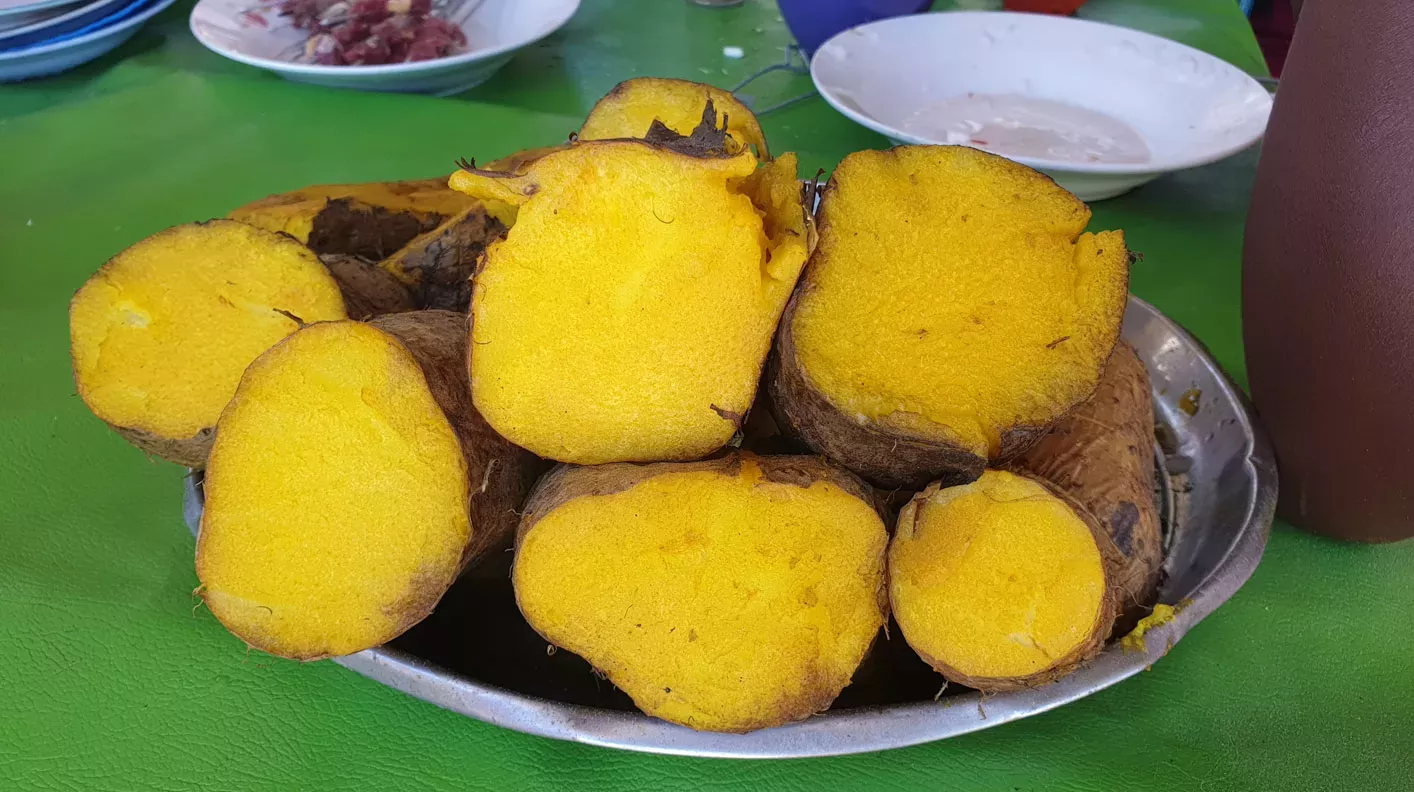
4. Yams
Yams (Dioscorea species) are a starchy edible tuber and a vital food in Madagascar. Normally eaten boiled, they provide a source of carbohydrates, protein, fibre, vitamins and minerals. Yams are particularly important during the dry season “hungry gap” when other staple crops, such as rice, have run out.
The yams in Madagascar, however, are disappearing, threatened by over-harvesting and habitat loss. Scientists at Kew and the Kew Madagascar Conservation Centre (KMCC) are saving wild yam species by growing a non-native winged yam species (Dioscorea alata) and developing protection plans with local communities and authorities. Their work is helping to maintain food supplies and increase household incomes.
Did you know...?
The Kew Madagascar Conservation Centre (KMCC) is Kew’s third site and only overseas office. Around 40 Malagasy researchers are based there, working to protect the unique flora on the world's fourth largest island.
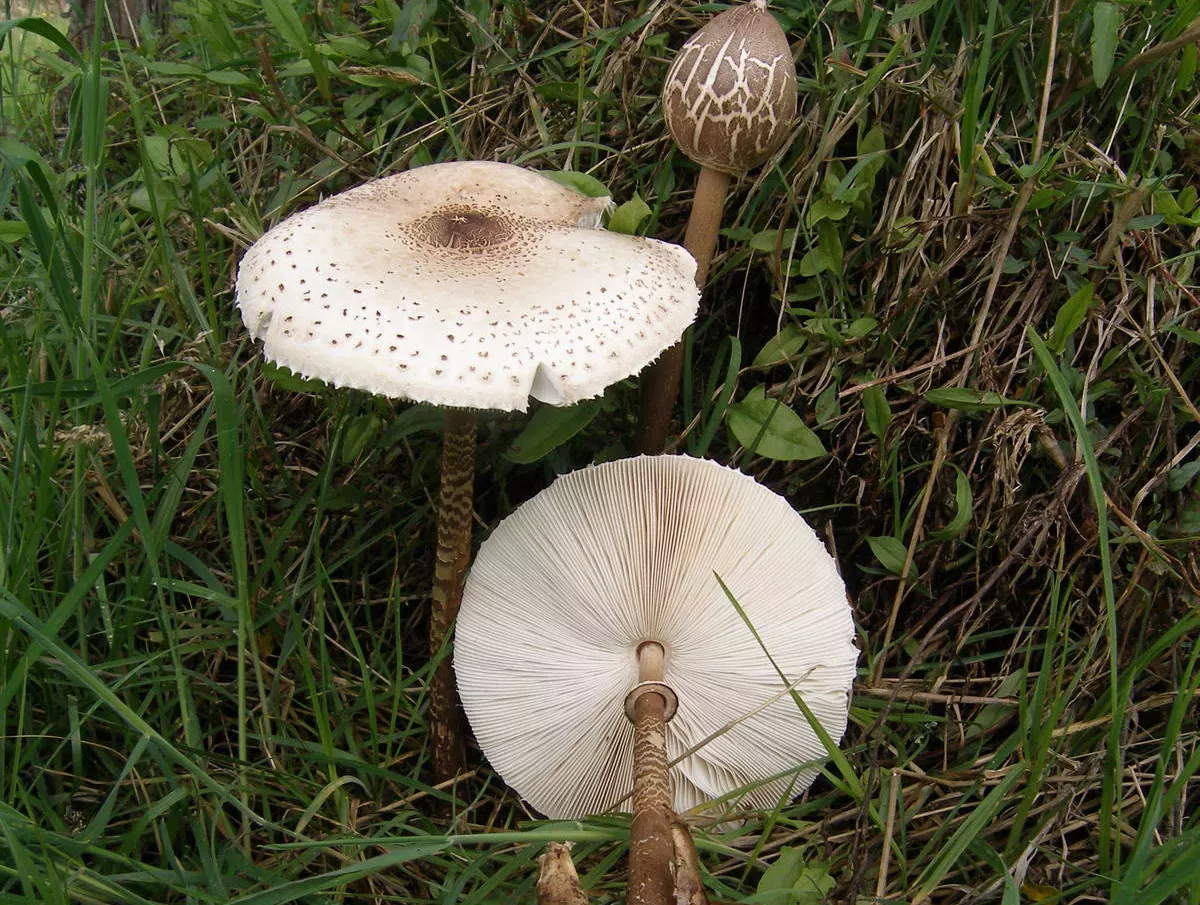
5. Colombian fungi
While the fungal world in Colombia is yet to be fully revealed, it’s estimated that the country could be home to around as many as 300,000 species – that’s almost 10% of the world’s fungal diversity.
Local communities and indigenous peoples have long relied on wild edible mushrooms, for example Macrolepiota colombiana Franco-Mol. (parasol mushroom), as a nutritional food source but urban communities are less aware of the benefits of eating fungi.
Kew’s Useful Plants and Fungi of Colombia project seeks out fungi with potential new uses for food, medicine and biotechnology that could be sustainably used to improve the livelihoods of millions.
Visit ColFungi, an online portal that provides information on Colombian fungi and their uses.

